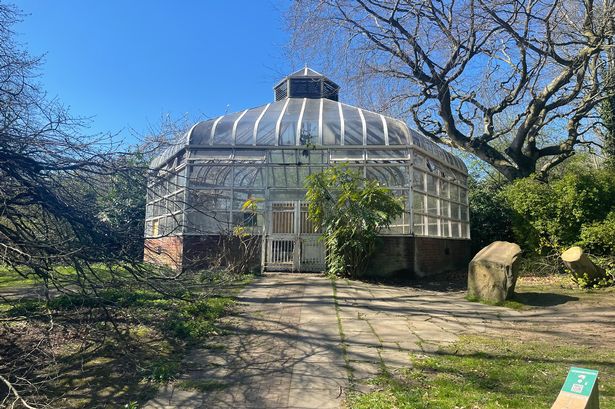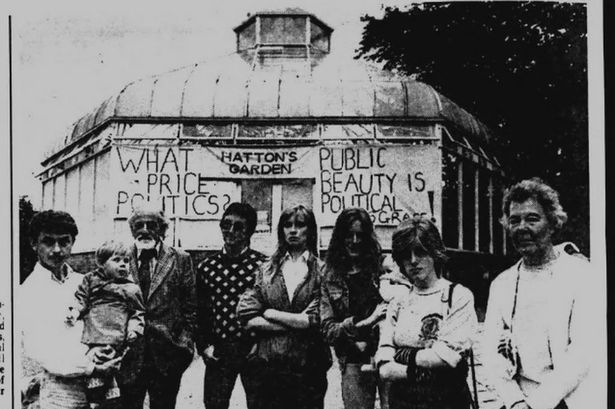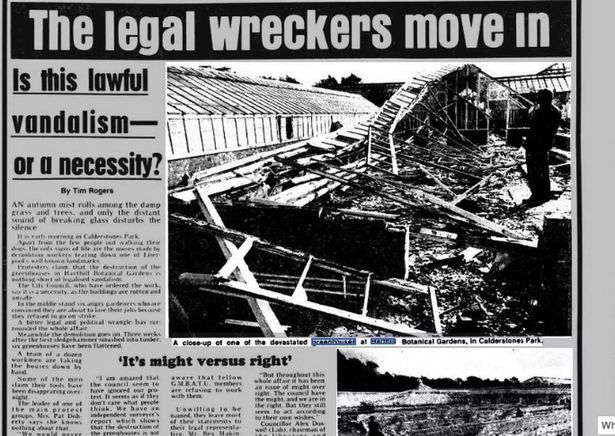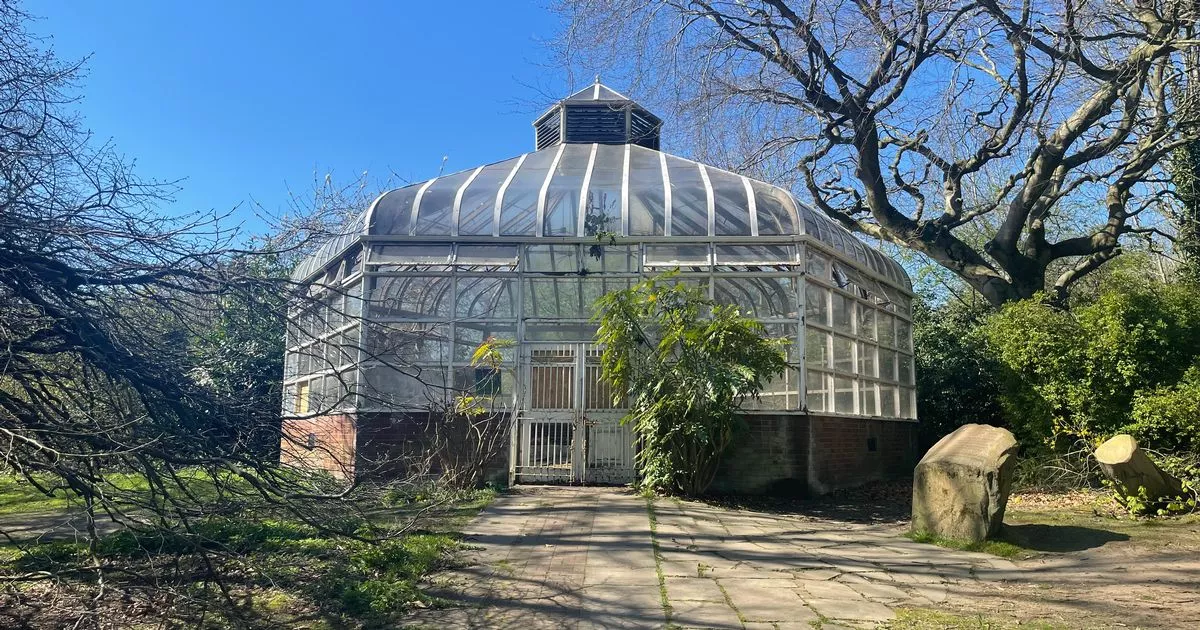The building was once home to ‘priceless’ items from across the world
14:48, 11 Jul 2025Updated 15:12, 11 Jul 2025
 The building was once much-loved(Image: Liverpool Echo)
The building was once much-loved(Image: Liverpool Echo)
A structure that hundreds walk past every day in a Liverpool park was once home to a major city attraction. Calderstones Park is one of the city’s most popular green spaces.
Located in the Allerton area of south Liverpool, the park boasts a woodland, lake and Japanese gardens. It is also home to The Reader, a national shared reading charity. Many will be heading to the park this weekend as a heatwave hits Liverpool and the rest of the UK. Temperatures are expected to reach 29C today. There could be a few more uncomfortable nights of sleep as Saturday is expected to peak at 32C.
As you make your way through the park towards Harthill Road, many walk right past an empty greenhouse without giving it a second thought. However, it was once central to one of the park’s biggest attractions: the Liverpool Botanic Garden.
For years, a trip to the park would have included a visit to the orchid house, described by one plant lover as being better than the collections at the Kew and Cambridge botanical gardens.
Writing in the ECHO, lawyer Rex Makin said: “They contained numerous exhibits of a variety of plants and flowers forming a collection which had been assembled over centuries, Liverpool being one of the first municipalities to have such a collection in Botanic Gardens, Wavertree.
“Priceless orchids and other speciality plants had been accumulated over the years from rarities brought to the port from overseas by seamen from all over the globe.”
According to Rachael Norris from The Reader, the first botanic garden in the city was built at the top of Mount Pleasant in the city centre in 1802. As Liverpool expanded and the air pollution grew, the greenhouse and its plants were moved to Wavertree Botanic Garden on Edge Lane in 1841.
That greenhouse was then destroyed by a bomb, which was dropped during the Second World War in 1941. Following the war, Percy Conn was employed by the Liverpool Corporation to manage the parks.
 A stone which commemorates the opening of the Liverpool Botanic Garden(Image: Liverpool Echo)
A stone which commemorates the opening of the Liverpool Botanic Garden(Image: Liverpool Echo)
Instead of replacing the Wavertree Glasshouse, he planned an ambitious new scheme for the complex of glasshouses at Calderstones Park, which opened in 1964 and was often referred to as Harthill. A stone by the greenhouse marks the opening, although it has a different date for when the bomb dropped.
It says: “This stone commemorates the opening of the Liverpool Botanic Garden on September 18 1964 in replacement of the Edge Lane Botanic Garden, destroyed by enemy action on November 20 1940.”
However, by the 1980s, the greenhouses had fallen into serious decline. According to Steve Lyus, a historian of the Liverpool Botanics writing in the Merseysider Magazine, “the wood was rotting, glass was falling out and the houses were not repaired”.
To make things worse, the greenhouses became a political football after the gardeners there refused to join a “day of action” in support of the hard-left council, which was then dominated by Militant.
 People protesting the closure of the greenhouses in Calderstones Park in the 1980s(Image: Liverpool Echo/British Newspaper Archive)
People protesting the closure of the greenhouses in Calderstones Park in the 1980s(Image: Liverpool Echo/British Newspaper Archive)
The gardeners were demoted, and took the council to court, where they won. But shortly afterwards the council decided it could no longer afford to maintain the greenhouses.
Many people opposed the closure, with the ECHO interviewing protester Pat Doherty on September 7, 1984.The mum of three compared taking the orchids out of the hot house to “taking works of art out of the Louvre”.
Another fan of the orchids wrote in to the paper: “Please ask the Council to think again, it is such a beautiful place. I thought it to be one of your most cherished treasures in Liverpool. I have been to many orchid houses – such as Kew and Cambridge to name but a few – but none could be on a par with Harthill.”
In the end, the council got its way – the orchid houses were demolished. Erica Kemp, who later became the city’s Lord Mayor, said the dispute prompted her to enter politics.
 A report on the greenhouses being demolished(Image: Liverpool Echo/British Newspaper Archive)
A report on the greenhouses being demolished(Image: Liverpool Echo/British Newspaper Archive)
She said: “After they’d been destroyed, I couldn’t go into the park for months and months afterwards, I just couldn’t bear to go in. It was just that big part of the park was missing.”
Only one greenhouse was left standing, which remains in the park to this day.
Rachael said: “The vast greenhouses were opened in 1964 and brought joy to many. However, the cheap construction eventually caught up with them and the low quality spruce began to rot.
“In 1984 the greenhouses were closed, and, with the exception of the hexagonal vestibule, live on only in the memories of those who visited them.”
The land the orchid houses once stood on continued to be contested territory over a plan by Redrow to build 51 houses on the site. The proposals were scrpped in 2019 following campaigning by the Friends of Harthill and Calderstones Park.
The greenhouse is currently empty but has been used for other purposes over the years, including housing the Neolithic Calderstones.
